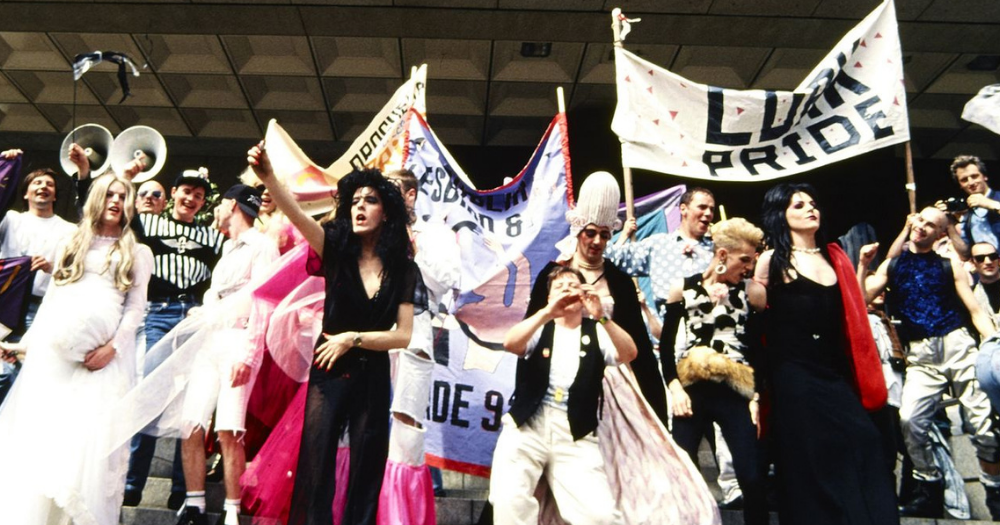Rainbow flags, colourful outfits, and glitter-adorned floats filled the city centre on Saturday, June 28, as Dubliners celebrated the culmination of Pride month. Dublin’s Pride parade, which takes place annually on the last weekend in June, is Ireland’s second-largest cultural event, behind St Patrick’s Day. Participants walk from the O’Connell Street bridge to Merrion Square, representing community, activist, and ally organisations. After the march embarked on its 42nd official year, GCN highlights five photos that showcase the history of Dublin Pride.
1974
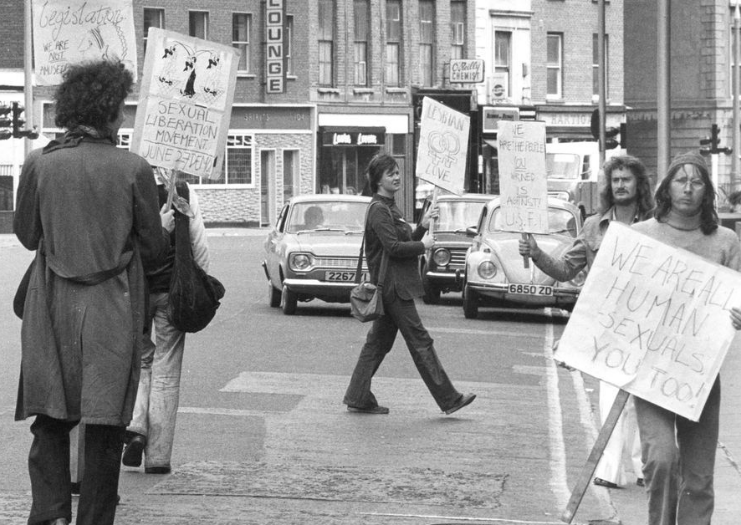
Dublin Pride has its origins in 1974 when a small group marched in front of the Department of Justice and the British Embassy, protesting the Victorian-era criminalisation of homosexuality. The protest, organised by the Sexual Liberation Movement, not only called for changes in legislation but was aimed at highlighting gay visibility in Ireland and ultimately paved the way for later Pride marches, including Saturday’s parade.
Among the participants was David Norris, a lecturer at Trinity College Dublin, whose historic court case, Norris v Ireland, ultimately led to the decriminalisation of same-sex relationships between consenting adults over 17.
1983
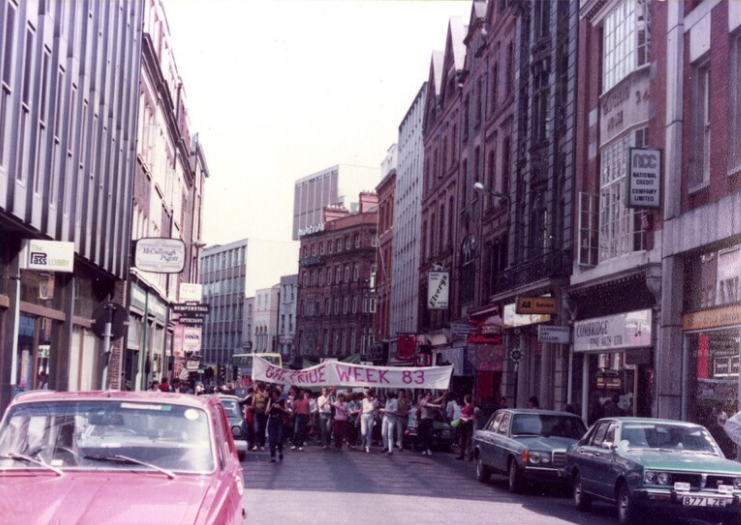
In June 1983, a group of several hundred people marched from St Stephen’s Green to the General Post Office, marking the first official Pride parade that was held in Dublin. The march was an open celebration of gay culture during a year that had seen heightened violence against the LGBTQ+ community.
Earlier in 1983, Declan Flynn was murdered in Fairview Park in a targeted homophobic attack. Flynn’s death helped spur the late-’80s Irish Gay Rights Movement and was one of the galvanising factors for the Pride Parade.
1993
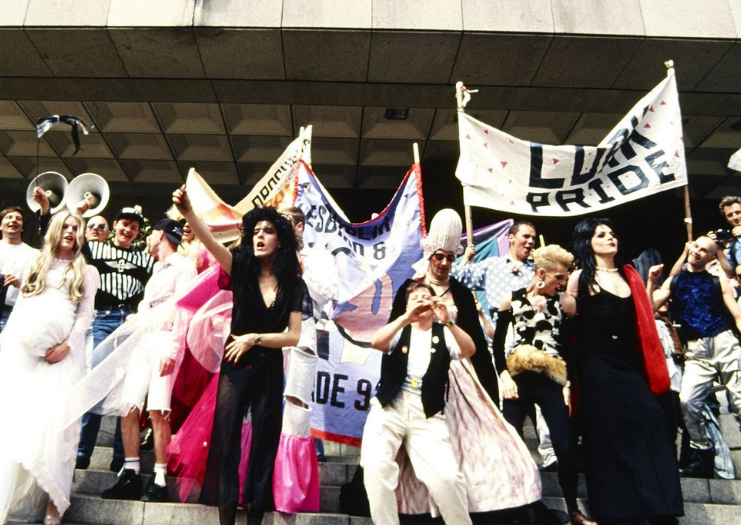
On the 10th anniversary of the first Pride parade and just two days after the government passed legislation that overturned the criminalisation of any form of same-sex intimacy between consenting adults, Dubliners took to the streets in celebration.
While the annual march had drawn low crowds in the late ‘80s, over 1,000 people showed up to the 1993 event. People from around the country came to commemorate the protection of LGBTQ+ rights, and drag queens, performers, and speakers filled the steps of the Central Bank in a show of Pride.
2015
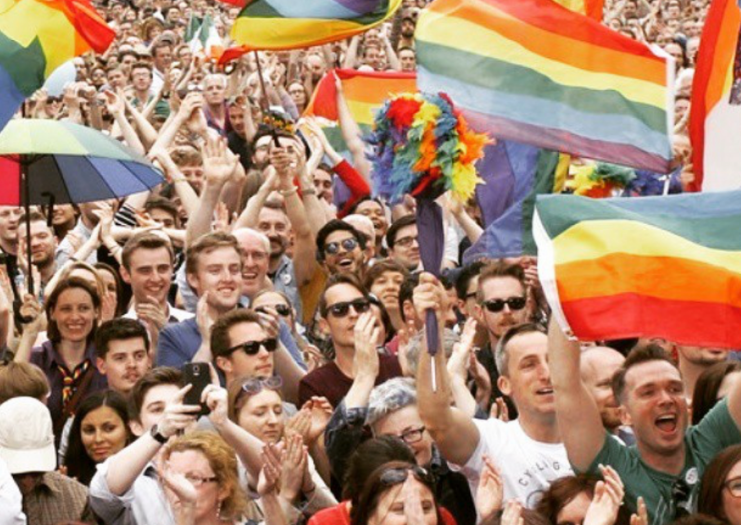
In 2015, Dublin’s Pride parade had what was then the highest turnout of all time, and rightfully so. In May of that year, Ireland voted to legalise same-sex marriage, making it the first country in the world to do so by popular vote.
Seas of people carrying signs that read ‘Yes’ in reference to the recent referendum and participants hoisting rainbow flags made the parade one of the largest in Europe.
2024
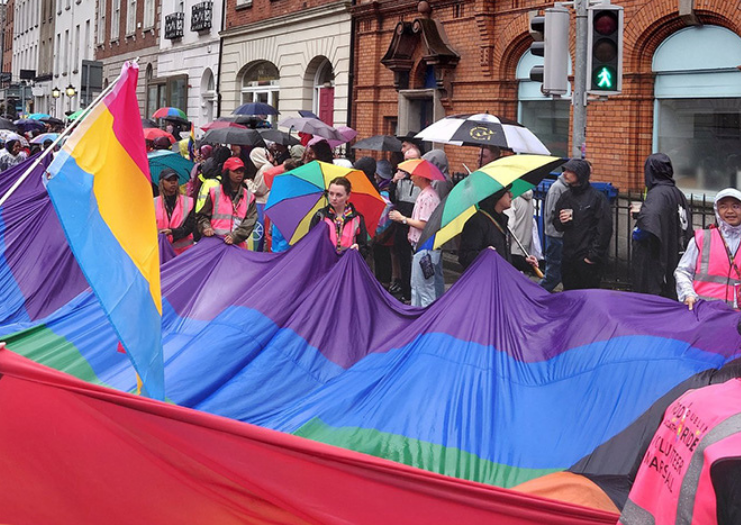
50 years after the first Pride demonstration in 1974, tens of thousands of people showed up to march in the annual parade despite rainy conditions. Mental health among LGBTQ+ youth—in addition to showcasing the diversity within the broader community—was an important topic for many marchers, reflected in the 2024 theme, ‘Shine.’
These photos capture just a snapshot of the history of Dublin Pride, and we can’t wait to see what the future holds.
© 2025 GCN (Gay Community News). All rights reserved.
Support GCN
GCN is a free, vital resource for Ireland’s LGBTQ+ community since 1988.
GCN is a trading name of National LGBT Federation CLG, a registered charity - Charity Number: 20034580.
GCN relies on the generous support of the community and allies to sustain the crucial work that we do. Producing GCN is costly, and, in an industry which has been hugely impacted by rising costs, we need your support to help sustain and grow this vital resource.
Supporting GCN for as little as €1.99 per month will help us continue our work as Ireland’s free, independent LGBTQ+ media.
